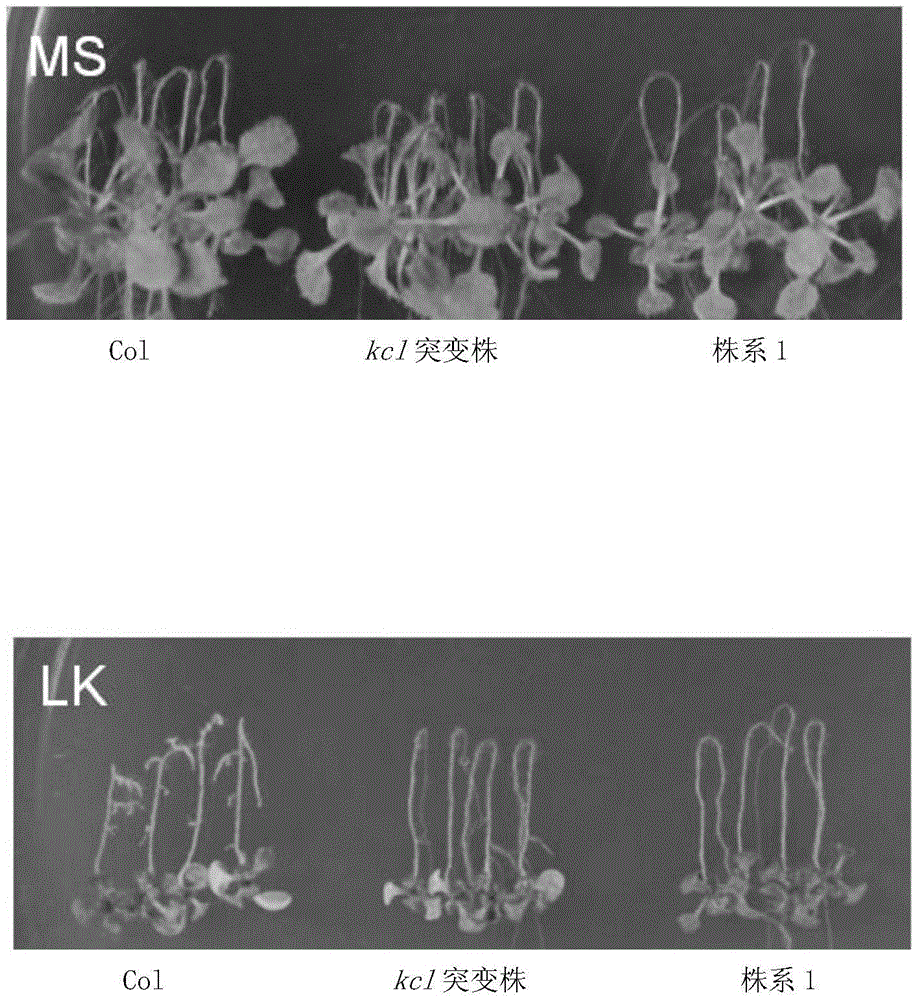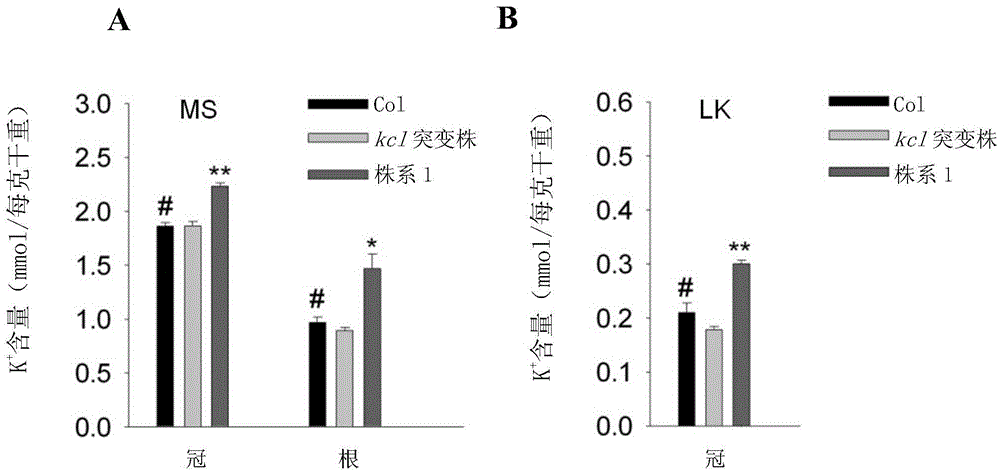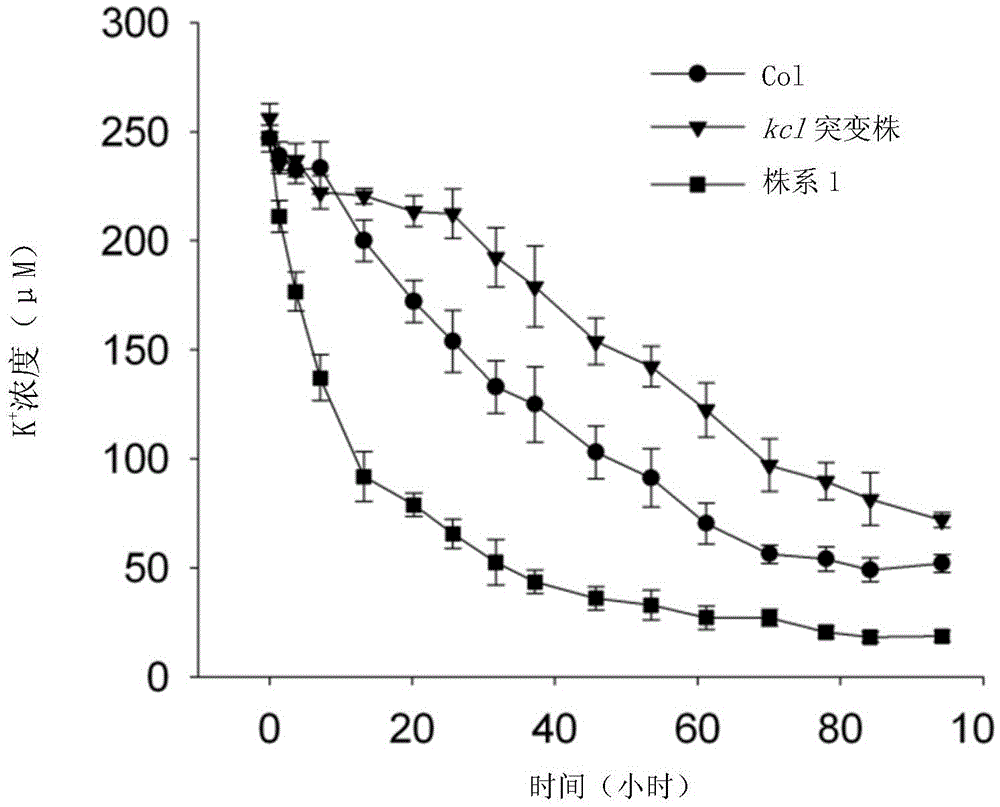Potassium ion channel protein KC1-D as well as encoding gene and application thereof
A technology of potassium ions and genes, applied to the potassium ion channel protein KC1-D and its coding gene and application field, to achieve the effect of increasing tolerance, increasing absorption capacity and absorption speed
- Summary
- Abstract
- Description
- Claims
- Application Information
AI Technical Summary
Problems solved by technology
Method used
Image
Examples
Embodiment 1
[0055] Embodiment 1, the acquisition of KC1-D protein and its coding gene
[0056] Mutants with low-potassium tolerance traits were obtained by screening for low-potassium stress on hundreds of thousands of Columbia ecotype Arabidopsis seedlings induced by EMS random mutagenesis. After sequencing, it was found that compared with the Colombian ecotype Arabidopsis, the mutant had a SNP mutation (mutation from G to A) in an open reading frame. The corresponding open reading frame in the mutant is shown in sequence 2 of the sequence listing, encoding the protein shown in sequence 1 of the sequence listing. The corresponding open reading frame in Arabidopsis thaliana ecotype is shown in sequence 4 of the sequence listing, and encodes the protein shown in sequence 3 of the sequence listing.
[0057] Compared with sequence 3, the difference of sequence 1 is only that the 322nd amino acid residue in sequence 3 is mutated from glycine to aspartic acid. Compared with sequence 4, the d...
Embodiment 2
[0060] Example 2, Functional verification of KC1-D protein
[0061] 1. Construction of recombinant plasmids
[0062] 1. Synthesize the double-stranded DNA molecule shown in sequence 2 of the sequence listing.
[0063] 2. Using the double-stranded DNA molecule obtained in step 1 as a template, a primer pair composed of Primer1 and Primer2 is used for PCR amplification to obtain a PCR amplification product, and a DNA fragment of about 2000 bp is recovered.
[0064] Primer1: 5'-GC TCTAGA ATGTCTACGACGACTACTGAGG-3';
[0065] Primer2: 5'-TC GAGCTC TTAGAAAATATATAAATGATCGTT-3'.
[0066] 3. Digest the DNA fragment obtained in step 2 with restriction endonucleases XbaI and SacI, and recover the digested product.
[0067] 4. Digest the Super1300 vector with restriction endonucleases XbaI and SacI, and recover the vector backbone of about 10,000 bp.
[0068] 5. Ligate the digested product of step 3 with the vector backbone of step 4 to obtain recombinant plasmid A. According to t...
PUM
 Login to View More
Login to View More Abstract
Description
Claims
Application Information
 Login to View More
Login to View More - R&D
- Intellectual Property
- Life Sciences
- Materials
- Tech Scout
- Unparalleled Data Quality
- Higher Quality Content
- 60% Fewer Hallucinations
Browse by: Latest US Patents, China's latest patents, Technical Efficacy Thesaurus, Application Domain, Technology Topic, Popular Technical Reports.
© 2025 PatSnap. All rights reserved.Legal|Privacy policy|Modern Slavery Act Transparency Statement|Sitemap|About US| Contact US: help@patsnap.com



